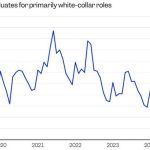(Photo Conor Coutts)
Virologist Jeffery Taubenberger, a longtime Fauci ally who for more than a decade has defended the practice of enhancing viruses known as gain-of-function (GOF) virology, ascended to the top of the National Institute of Allergy and Infectious Diseases (NIAID) on April 24. His bosses, Health and Human Services (HHS) Secretary Robert F. Kennedy Jr. and National Institutes of Health (NIH) Director Jay Bhattacharya, oppose GOF as potentially catastrophic.
One week after Taubenberger became head of NIAID, HHS announced May 1 that it would make a half a billion-dollar investment in a vaccine technology co-invented by Taubenberger. Taubenberger could receive royalty payments and lab investments should the taxpayer-funded bet on the vaccine technology prove successful, according to government watchdog Open the Books (OTB).
Taubenberger’s rise to the top of the second largest subagency at Bhattacharya’s NIH follows a career marked by headline-grabbing GOF research.
Taubenberger’s most famous experiments involved what his lab’s website refers to as “archaevirology”— reviving the 1918 Spanish flu that killed up to 100 million people from a body preserved in permafrost. Taubenberger has also participated in experiments to splice genes from 1918 flu with contemporary H1N1 viruses. Critics like Kennedy and Bhattacharya say gain-of-function experiments like these have no public health benefit.
Taubenberger did not respond to requests for comment for this story.
.@SecKennedy tells the story of how America came to fund Gain-of-Function research in Wuhan: “In all of the history of Gain-of-Function research, we cannot point to a single good thing that has come of it.” pic.twitter.com/D3mgDNYRyP
— Rapid Response 47 (@RapidResponse47) May 5, 2025
‘The Complaining Crowd’
As the virologist behind some of the most famous GOF experiments in history, Taubenberger worked with Fauci to advocate for the discipline against the concerns from other scientists about lab-born pandemics, emails obtained through the Freedom of Information Act show.
“The complaining crowd”: That’s how Taubenberger referred in a May 2020 email to people concerned about one of the earliest and most hotly debated GOF experiments — the creation of an airborne H5N1 avian influenza virus. The World Health Organization estimates the fatality rate of H5N1 to be roughly 50%.
Taubenberger’s elevation to NIAID director shows the practical challenges of “draining the swamp.” Kennedy and Bhattacharya, despite ambitions for upheaval, face an entrenched Washington bureaucracy.
Taubenberger’s leadership of the $6.6 billion institute is temporary, but it comes at a sensitive moment.
As the head of NIAID, the agency that underwrites most federally-funded GOF, Taubenberger is well-positioned to influence new regulations. His leadership coincides with a 120-day sprint to ban “dangerous gain-of-function research.” Trump signed an executive order on May 6 that started the clock on a four-month process to hammer out the precise language.
🚨 BREAKING: @POTUS just signed an executive order protecting Americans from dangerous gain-of-function research.
The order:
— Ends any present and all future Federal funding of dangerous gain-of-function research in countries of concern like China and Iran and in foreign… pic.twitter.com/4Cn7iQ4i3L
— Rapid Response 47 (@RapidResponse47) May 5, 2025
“I was very disappointed by the appointment of Jeffrey Taubenberger as head of NIAID,” Laura Kahn, a pandemic expert and coauthor of the book “One Health and the Politics of COVID-19,” told the Daily Caller News Foundation. “Given Taubenberger’s research history, his appointment suggests that such work will continue to be supported by NIAID despite Trump’s executive order. Have we learned nothing from COVID-19?”
Taubenberger’s reconstruction of the 1918 influenza virus “sent a terrible message to China and Russia that dangerous GOF work was acceptable,” Kahn said.
In contrast, virologists who support GOF have praised the pick.
“He’s a senior scientist at NIH and a collaborator of Matthew Memoli who was acting NIH director … Huge plus that the lab leak conspiracists over on X are so upset about it,” wrote University of Sydney virologist Eddie Holmes on BlueSky. Holmes is a collaborator of Taubenberger and one of the virologists who aided Fauci in downplaying a possible lab origin of COVID in 2020.
When the COVID-19 pandemic emerged, Taubenberger worked with Fauci’s disgraced senior scientific adviser David Morens to defend the researchers who had conducted GOF research in Wuhan. He and Morens coauthored a July 2020 scientific paper arguing that “theories about a hypothetical man-made origin” of the coronavirus “have been thoroughly discredited.”
The article published at an opportune time for Wuhan Institute of Virology collaborator Peter Daszak, whose organization EcoHealth Alliance faced the possible clawback of NIH funding if it couldn’t produce critical data about its coronavirus research in China. Morens described the article as one that “defends Peter and his Chinese colleagues.”
Sure enough, Daszak received a new $7.5 million grant from NIAID by August 2020 even without turning over information from Wuhan.
Morens later faced bipartisan criticism in 2024 for emails exposing his attempts to evade the Freedom of Information Act in his communications with Daszak, a longtime friend. Morens said that he would “delete any smoking guns.”
With help from officials within NIH like Taubenberger, Daszak stalled the suspension of his NIH funding. It was roughly four years later, after a congressional investigation, that EcoHealth and Daszak faced a federal funding suspension and, eventually, debarment.
.@NIHDirector_Jay: “This is a historic day. The conduct of this dangerous gain-of-function research… many scientists believe is responsible for the COVID Pandemic.” https://t.co/0INpPRQFBO pic.twitter.com/LwpcGP7KpZ
— Rapid Response 47 (@RapidResponse47) May 5, 2025
‘Nature Is The Ultimate Bioterrorist’
Taubenberger’s public statements on GOF research — while more measured than the private communications mocking people with concerns — contrasts starkly with that of his bosses.
“In considering the threat of bioterrorism or accidental release of genetically engineered viruses, it is worth remembering that nature is the ultimate bioterrorist,” reads Taubenberger’s 2012 article defending the avian influenza experiment.
That position directly contradicts comments Bhattacharya gave on May 7 in a television interview citing that work as emblematic of the GOF the NIH plans to fetter out.
“That avian influenza work, I think it was in 2010 or 2011, and it led President Obama to actually put a freeze on all gain-of-function work which President Obama lifted almost on his last day in office in 2017,” Bhattacharya said in an interview with Newsmax. “Anything that puts the American people at risk like this is not something we at the NIH should be doing.”
Kennedy too was critical of that experiment in his 2023 book “The Wuhan Cover-Up And the Terrifying Bioweapons Arms Race.”
Morens grumbled in an April 2020 email that he and Taubenberger had defended GOF research before against “Ludditism.”
“I am sure both of you remember the GOF attacks of a decade ago,” he said. “tony, me, Jeff Taubenberger, and many others here had to do battle with a lot of craziness. … It was much less [sic] about science than [it] was about Ludditism.”
In a separate May 2020 email, Morens reiterates the important role that he and Taubenberger played in advocating for GOF and combating the concerns of scientists at Stanford University, Harvard University and Rutgers University, which he described as “demagoguery.”
“As Tony’s scientific advisor, i spent much of the year, along with Jeff T, helping brief him and get him up to speed,” he said.
Taubenberger, like Morens, was an active participant in Fauci’s campaign to defraud the public and policy makers about the origin of COVID.
Taubenberger’s participation in fraud is disqualifying for appointment as Acting NIAID Director.@NIHDirector @SecKennedy https://t.co/JyUV8H96g4 pic.twitter.com/uCzad4OEdu
— Richard H. Ebright (@R_H_Ebright) April 25, 2025
‘Leopard That Hasn’t Changed Its Spots’
The COVID-19 pandemic did not appear to dampen Taubenberger’s enthusiasm for GOF research. Taubenberger said in a December 2022 podcast interview with another prominent advocate for GOF virology that he aspired to revive other pre-1918 pandemic viruses through “archival tissues” from human autopsies, including viruses that caused pandemics in the Middle Ages.
“With the newer molecular techniques, I’ve consistently remained hopeful that someday the magic tissue sample will be found,” Taubenberger said.
The Central Intelligence Agency, the Federal Bureau of Investigation and the Department of Energy all have intelligence pointing to a lab origin of COVID-19.
Taubenberger’s support of GOF research three years after COVID-19 emerged is troubling, according to Andrew Noymer, an associate professor of population health and disease prevention at the University of California, Irvine.
“Any leopard that hasn’t changed its spots already in the light of SARS-CoV-2, I’m skeptical will change its spots now,” Noymer said to DCNF. “I’m all for road to Damascus conversions, but if you can be pro-gain of function in December 2022, then it seems to me you’re a dyed in the wool pro-gain-of-function person and therefore not the right choice to implement the recent executive order.”
“”There is no sound scientific reason to conduct these experiments.” – The Sunshine Project in 2003 on Jeffrey Taubenberger’s recreation of 1918 influenza. It was a more civil time long before COVID, but much of the message remains valid today. pic.twitter.com/DlWGgEpYLc
— Edward Hammond (@pricklyresearch) April 26, 2025
Vaccine ‘Gold’
Within a week of Taubenberger taking the reins at NIAID, he started ruffling feathers.
HHS will devote massive departmental resources toward the development of a flu vaccine platform co-owned by Taubenberger in the hopes it will provide broad protection against multiple strains of pandemic-capable flu viruses, the department announced earlier this month.
HHS has dubbed the initiative “Generation Gold Standard.”
The money has been rejiggered from a $5 billion investment by the Biomedical Advanced Research and Development Authority (BARDA) and NIAID in next generation COVID-19 vaccines announced in 2023.
The vaccine prototypes — blandly named “BPL-1357” and “BPL-24910” — are BPL-inactivated whole-virus vaccines, a technology that has been in use since the 1950s. “BPL” stands for beta-propiolactone, a chemical used in vaccines to inactivate viruses, destroying their infectivity while retaining their ability to provoke an immune response.
Taubenberger holds two patents titled “Broadly Protective Inactivated Influenza Virus Vaccine.”
The new investment builds on the research of Taubenberger and his longtime collaborator Matthew J. Memoli, Bhattacharya’s principal deputy.
HHS said in its statement announcing Generation Gold Standard that the investment has “freedom from commercial conflicts of interest.”
But there’s another apparent conflict of interest: Should the vaccine prove safe and effective, Taubenberger could earn up to $150,000 annually and additional funds for his lab, per an investigation into NIH royalty payment rules by OTB.
NIH insists firewalls prevent the undue influence of patent holders on grant-making decisions but with few specifics. Then-NIH Acting Director Lawrence Tabak could not precisely describe the firewalls when pressed by congressional Republicans in May 2022, according to an August 2023 OTB investigation.
Some scientists criticize the surge in HHS resources toward a decades-old technology, according to press reports.
The investment is a major career milestone for Taubenberger, a Fauci-aligned expert who has not only survived but thrived in a department now led by self-declared “renegades” like Kennedy.
The success comes despite a career and declared worldview starkly at odds with the renegade ethos of his bosses.
“My wife bought me a mug that says ‘my medical degree is worth more than your Google search,’” Taubenberger said in the 2022 podcast interview.











